Driverless Future Challenge finalists envision autonomous transit solutions for NYC
By Justine Testado|
Wednesday, Jun 28, 2017
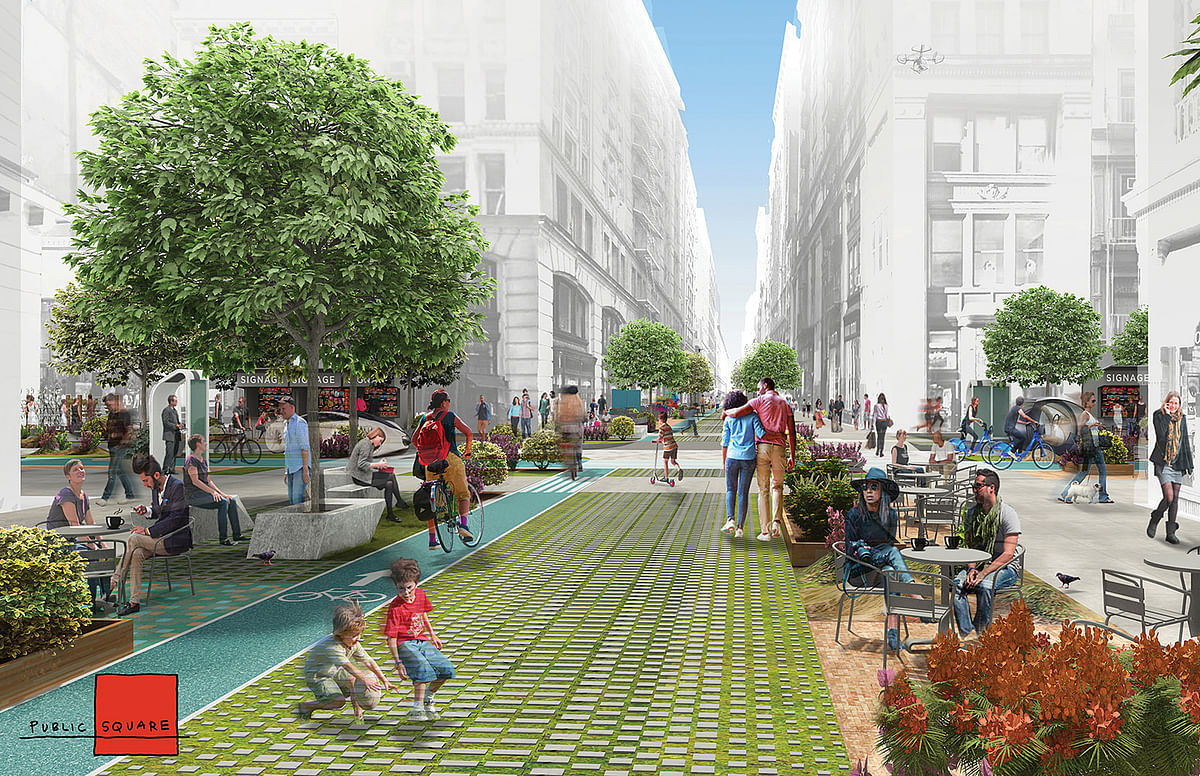
Related
With the rise of autonomous transportation technology in the U.S., what implementable strategies can help a dense urban landscape like New York City prepare efficiently for a driverless future? Design teams from around the world proposed their ideas in the Driverless Future Challenge, organized by Blank Space (the creators of the Fairy Tales Architecture Competition) and the City of New York.
Participants from over 25 countries sent proposals that ranged from driverless food cards to using NYC's 311 system as a driverless dispatching center. Now, the jury has selected the four finalist teams.
“The Driverless Future Challenge specifically set out to uncover the impact of autonomous vehicle technology as viewed through the Mayor’s four distinct lenses under the OneNYC initiative: Growth, Equity, Sustainability, and Resilience,” Blank Space Co-founder Matthew Hoffman said. “The entries in the competitions are smart, actionable, and ready to actively redefine the city,” added Francesca Giuliani, Co-founder of Blank Space.
In the coming weeks, finalist teams will work at New Lab in the Brooklyn Navy Yard to start turning their proposals into reality. They will then publicly present their projects to NYC Commissioners at the “Pitch The City” event, during the monthly NY Tech Meetup on July 11 at NYU's Skirball Center. The competition jury will select the winning team live at the event.
Find each finalist's proposal below — plus project videos!
“Public Square” by FXFOWLE Architects with Sam Schwartz Engineering


Project description: “The future of automated vehicles is coming. While we don't know exactly what that future will look like, most experts agree that driverless cars and increased car sharing will mean less parking on the streets. Narrower traffic lanes, and more efficient traffic patterns will mean that traffic will need less road space too. Space on our streets that was once used for cars will become available for something else.
Public Square provides New York City a way to rethink its streets and reclaim space for pedestrians. Public Square is a plug-and-play system of interlocking unitized squares, roughly 8’x8’ in size, with built-in infrastructure, and a wide variety of surface module programs, from seating, to retail stands, to play equipment, to gardens and green space. This allows endless configurations and adaptations to suit each blocks needs.Public Square is an additive solution, secured to existing curbs and street beds, providing the armature for streetscape transformations. The system allows for easy access to utilities and works with existing drainage paths.
Parklet programs have proved successful at transforming parking spaces into public spaces in cities across the country, including New York. But these have been small scale interventions, done piecemeal, and often on a temporary basis.Citi Bike and other bike share systems have shown that street infrastructure can be designed in a unitized, flexible, easily deployable and removable way. Public Square builds on these successes, bringing Citi Bike’s systemization to the parklet’s many public realm benefits, expanding on the idea with a broad range of program modules.
Public Square modules can be easily installed or changed, to incrementally transform streets, or to modify them as needs change.The transition to driverless vehicles will require incremental change, and Public Square allows the public realm to be responsive to changes in how we drive, however fast or slow those changes happen.Public Square can be configured to meet the needs of a particular neighborhood today, and reconfigured as technology advances.
In addition to the public realm benefits, Public Square benefits the environment by providing biofiltration of stormwater, and reducing the heat island effect. No one knows exactly how driverless cars will change the way we live. But whatever the driverless future looks like, Public Square can help cities shape that future for a greener, more walkable, more bikeable, more lively public realm.”
“QueueY” by Daniel Hui, Danil Nagy & Spencer Wright
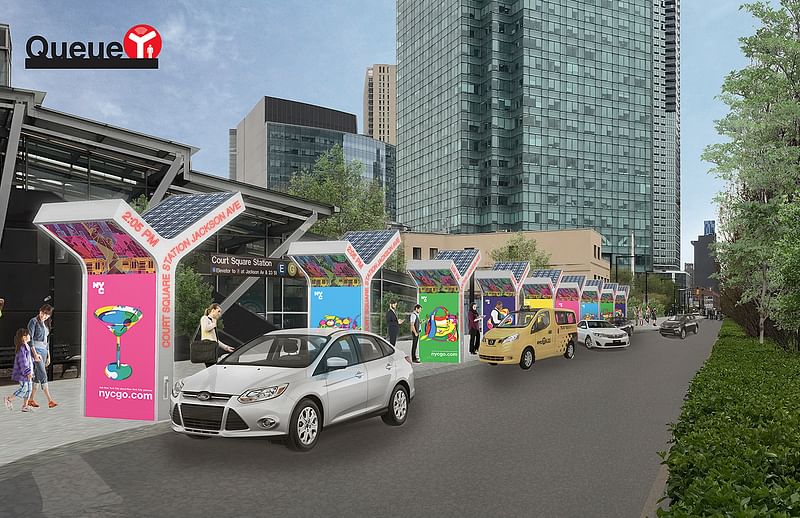

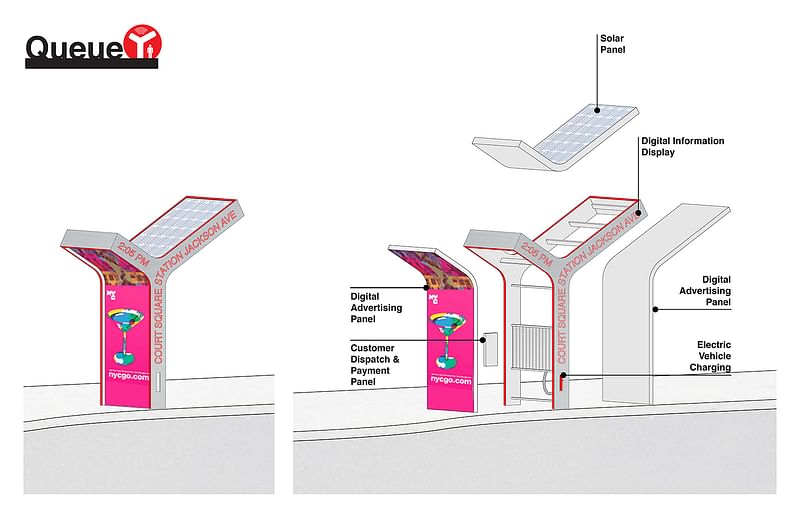
Project description: “Managing our busiest curbs - QueueY is a system for managing high-volume AV pickup & dropoff locations. It consists of curbside hardware and a multi-sided platform for managing last-mile transit. QueueY establishes a coordinated zone around transit hubs, and convertscurbside parking space to a dedicated loading and unloading area. As AVs approach the terminal, they’re directed to the next available station and allowed to park. Each station includes a dedicated charging system, which will automatically engage when required. As a passenger, QueueY makes ridesharing efficient and easy. Commercial ridesharing apps work just like normal, but with the added benefit of having a covered space to wait during bad weather. During rush hour, when dozens of passengers are waiting for rides at any given moment, QueueY’s built-in LED signage makes it easy to identify which ride is yours. Meanwhile, riders paying cash (and anyone with low batteries on their phones) can summon rides right on the QueueY kiosks. QueueY’s LED signage – and its built-in advertising space – will be powered from an integrated solar panel in its roof.
Rollout & Strategy - QueueY will pilot in one location starting in 2019, with four additional sites coming in 2022. In the initial phases, QueueY will be configured to work with both human-driven and autonomous vehicles. As AV technology matures, we’ll transition to a managed, all-AV zone. With our prime advertising area, QueueY will generate revenue through advertising sales. We’ll also create affiliate programs with ridesharing companies, which will pay for the privilege to pick up and drop off at prime locations.”
“sAVe” by IBI Group
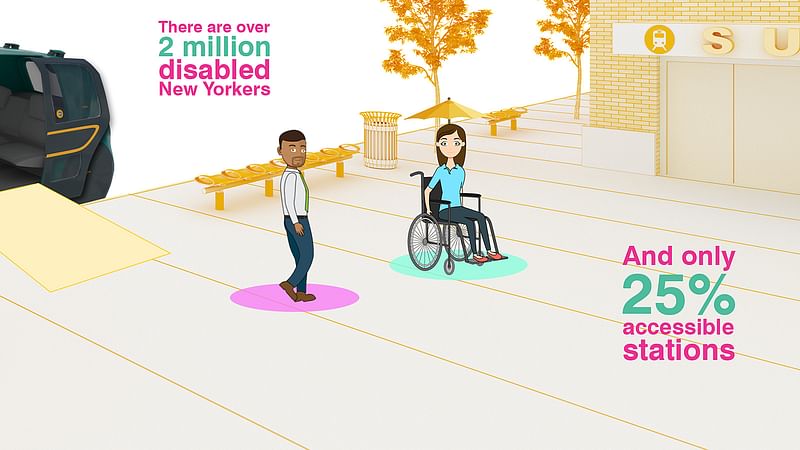
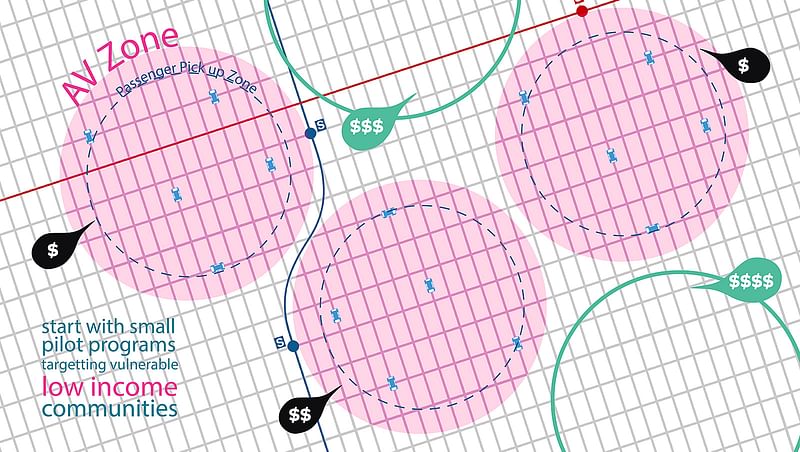
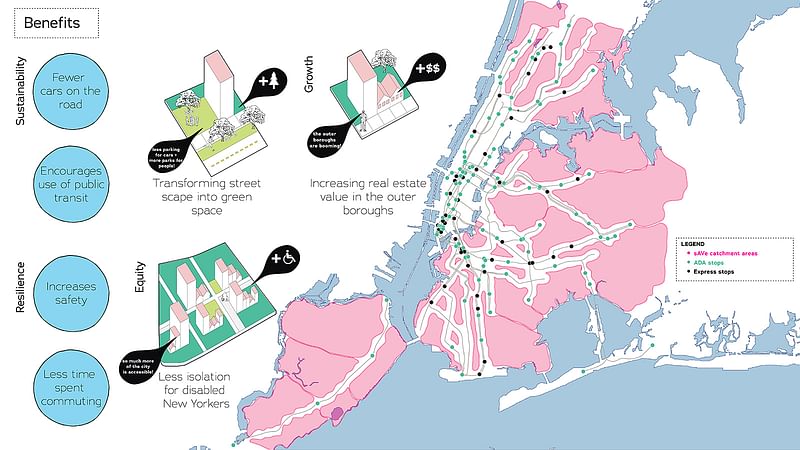
Project description: “As the populate decline of prior decades reverses, and the outer boroughs become the areas with the greatest growth, New York City leaders are faced with an ever-increasing shortage in affordable housing, increasing traffic congestion, and new demand for public transit services. While New York's subways are legendary, more people are moving to neighborhoods where transit service is limited or non-existent. This relocation leads to an increase in local and commuter traffic congestion, and leads to the further isolation of vulnerable residents who cannot drive, have limited income for taxi services, and/or lack access to subways and buses. As the implementation of new infrastructure is often a multi-year process, New York needs innovative solutions to immediately provide affordable transportation services to reach transit ͞deserts͟. The rapid advancement of driverless vehicle technology is one such opportunity, however, it could be another 10-plus years before fully driverless vehicles are commonplace.
sAVe delivers a community-supported, accessible, Mobility as a Service platform that offers multi-modal ridesharing services, including automated vehicles as they become available. sAVeprovides trip service in underserved neighborhoods and connects those residents to public transit hubs that they cannot otherwise access conveniently. In order to meet the needs of all users, sAVerides can be found and booked via smartphone app, community kiosk, or by speaking with a customer service representative.
The service offers the benefits of: leveraging existing public infrastructure without increasing the number of private vehicles in already-congested areas; providing a social opportunity with associated rewards incentives to residents who choose to affordably ride-share with other community members; and gradually introducing AVs to new populations who may not otherwise get to experience or benefit from this technology. Finally, as an agency-sponsored application,sAVe enables oversight of private transportation network companies permitted to operate within the service area.”
“Urban Oasis” by Lily Shi, Yodai Yasunaga & Jiaming Zhang
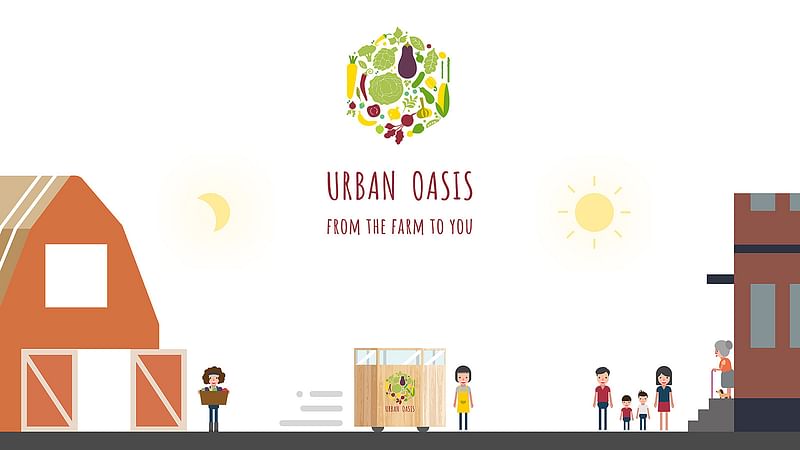


Project description: “Urban Oasis is an innovative take on the autonomous vehicle technology to tackle the issue of food deserts in NYC. Current solutions, such as Green Carts are bringing fresh produce to these neighborhoods but they are not perfectly mobile nor reliable. Therefore, Urban Oasis aims to reinvent the system by creating a new grocery shopping experience that brings the goods and services to the users. It specifically takes advantage of the autonomous car technology to create a system that is trackable via app to increase reliability, mobile to save scarce real estate, and adaptable to apply to other needs and scales. Early in the morning, the Urban Oasis trucks pick up the freshly harvested fruits and vegetables from the local farms and drive themselves to the city. They congregate at community space and form farmers markets throughout the city three times a day. Urban Oasis employees will be present at these markets to facilitate community oriented events such as cooking demos to incorporate more human elements into the system. During the rest of the day, they deliver community supported agriculture boxes filled with fresh produce to people living in food deserts. Since the car is driving itself, the interior of the truck is designed to enable the employee to assemble and deliver these CSA boxes while the car is transiting.
Urban Oasis benefits all of the stakeholders involved in the process: the farmers, Urban Oasis employees, and the end users. The Urban Oasis truck saves the farmers travel time from their farm to the city, allowing them to focus their time on other tasks. The Urban Oasis employees are hired from local neighborhoods. The truck can pick up and drop off the employees so people with no driver’s license or with limited mobility can still become an urban oasis employee. And finally, urban oasis brings fresh produce to food deserts and people with limited mobility.”
Don't forget to check out each team's project video below!
The Driverless Future Challenge jury panel will include NYC Government Officials from the Mayor’s Office, the Economic Development Corporation, the Department of Transportation, the Taxi and Limousine Commission, the Department of City Planning, and a representative from New Lab, NYC’s preeminent technology and manufacturing hub.


Share
0 Comments
Comment as :